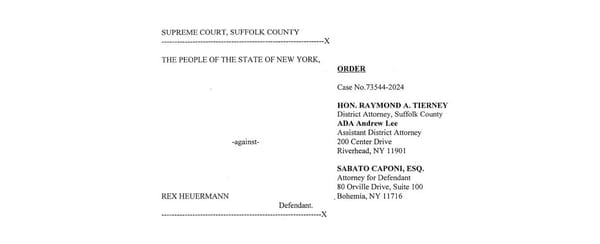Forensic Genetic Genealogy (FGG) is transforming the way investigators solve cases with biological evidence. Even seven years after its first applications, we are still exploring the full capabilities and potential of this powerful forensic tool. As FGG continues to demonstrate its ability to bring resolution to survivors, victims, and families, support public safety, and advance justice, it is critical that the policies guiding its use evolve alongside the technology and its applications.
The Department of Justice’s 2019 Interim Policy on Forensic Genetic Genealogical DNA Analysis and Searching remains a key document in shaping the responsible application of FGG. Revisiting and clarifying the intent behind this policy is essential to ensure that it continues to support — rather than unintentionally limit — the value that FGG can deliver. One area where this tension has emerged is in the restriction that limits the use of FGG only for unidentified human remains (UHR) cases when the manner of death for the UHR is determined to be homicide.
This “homicide nexus” requirement presents a serious challenge, because in many cases, the circumstances of death are not clear at the time remains are found. In fact, at times, it is impossible to make a definitive determination of homicide without first identifying the individual.
Understanding the Scope of the DOJ Interim Policy
The 2019 DOJ interim policy provides guidance on the use of FGG in criminal investigations. Importantly, the policy primarily applies to cases investigated by federal law enforcement agencies, cases funded by federal grants (including grants passed through to state, local, or tribal agencies), and cases where DOJ personnel, contractors, or grantees are directly involved in the process.
In short, the policy governs how federal resources — funding, personnel, and investigative support — can be used in FGG cases which in turn directs the types of cases that may be investigated with federal funds. It does not directly regulate state or local cases that are funded by non-federal sources; however, many agencies look to the DOJ policy guidelines as a national standard, which gives it broad influence across the forensic and investigative communities.
Cause of Death vs. Manner of Death
When unidentified human remains are discovered, a medical examiner or forensic pathologist will attempt to determine the cause and manner of death. These critical aspects are distinct but related determinations that each play a role in understanding what happened to the person.
The cause of death refers to a physiological disruption that caused the person to die. For example, blunt force trauma, exsanguination from a gunshot wound, drug overdose, or heart attack are causes of death. Cause of death explains the specific medical event that directly led to the individual’s death.
The manner of death, on the other hand, categorizes the broader circumstances under which the death occurred. Manner of death is typically classified into one of six categories: homicide, suicide, accident, natural causes, undetermined or pending. For example, a gunshot wound might be the cause of death, but depending on the circumstances, the manner could be categorized as homicide (if someone else fired the weapon), suicide (if the individual shot him or herself), or accident (if the shooting was unintentional).
These determinations can be complex and limited by the condition of the remains. In cases where the available evidence is insufficient to confidently classify the cause or manner of death, examiners are trained to report what is known without speculation. When uncertainty remains, an appropriate determination of “undetermined” may be issued.
Why “Undetermined” Happens and Why It Matters
This interpretation of “undetermined” acknowledges the limits of available evidence. Rather than speculating, the examiner defers judgment if or when more information becomes available, sometimes pending identification of the individual or new investigative findings. However, under the DOJ’s interim policy, a case marked as “undetermined” (or “pending”) is effectively excluded from using federal resources for FGG because there is no formal indication that a homicide occurred.
Ironically, the cases where manner of death is “undetermined” and where identification is needed most urgently are often the very ones where FGG is restricted.
The Challenge of Unidentified Human Remains
When human remains are discovered, especially partial remains or remains exposed to the elements, critical forensic evidence may be absent or difficult to interpret. Environmental insults and/or scavengers may erase key clues. Skeletal remains might not display obvious trauma. Informative personal items might be missing. Knowing the identity of the unknown person can assist in determining the time of death, assessing personal history, and/or even establishing whether the death was natural, accidental, suicidal, or the result of a homicide.
In many cases, identification is the first and most important step toward understanding what happened to the unknown person. But under the current DOJ interim policy, without a designation of homicide, investigators are limited in their ability to deploy FGG, even though it could be the very tool that unlocks answers.
The homicide nexus creates a Catch-22:
FGG cannot be used unless homicide is suspected.
But homicide often cannot be suspected until after an identity is established.
Thus, with this policy cases involving unidentified persons — even those where foul play cannot be ruled out — may languish for years or decades or never get solved, simply because the initial circumstances do not meet the DOJ policy threshold.
How FGG Has Transformed UHR Investigations
Traditional forensic DNA methods, such as short tandem repeat (STR) profiling, have been essential tools for human identification for decades, but they have their limitations. STR profiles require a sufficient quality of DNA to yield results. Thus, biological evidence that has been exposed to harsh environmental conditions, such as human remains, may not produce typable results, not making identification possible. When results are obtained, often they are searched against government-maintained forensic DNA databases, such as CODIS. If the DNA profiles of close family members of the unknown person are not in the database, a search yields no investigative lead. This problem is exacerbated further in cases involving UHRs, where antemortem reference samples or close family reference samples may be limited or unavailable. As a result, countless UHR cases are stalled for years, leaving families without answers and allowing perpetrators to evade justice.
The introduction of FGG has changed this landscape dramatically. By searching broader genealogical databases, investigators can develop new leads even when no association through STR typing can be made. Programs like the National Missing and Unidentified Persons System (NamUs) have embraced the use of FGG, now routinely applying it in UHR casework. FGG has led to the resolution of numerous previously unsolvable cases in NamUs, giving names back to the nameless and restoring dignity and respect to those who might otherwise have remained unidentified.
Summary
The intent behind the DOJ’s interim policy is laudable. Prioritizing homicides ensures that FGG resources are deployed where they are likely to have the greatest impact on public safety and justice.
However, rather than using the homicide nexus as a strict acceptance criterion that excludes certain cases from receiving funding, a more impactful approach would be to treat it as a prioritization factor. Clear and obvious homicides should continue to be prioritized for FGG resources. However, cases with undetermined or pending interpretations should not be excluded from funding or access to FGG — especially when identification could reveal critical information about whether a crime occurred. This adjustment would preserve the intent of the policy, focusing resources where they are most needed, while ensuring that investigators are not handcuffed by uncertainty in the early stages of a case.
Furthermore, federal funding should support the identification of all unidentified human remains, regardless of manner of death, because these cases are often linked to open missing persons investigations. Identifying remains not only brings closure to families but also allows law enforcement to close cases and reallocate critical investigative resources to other pressing needs. Restricting funding only to homicide cases leaves countless missing persons investigations unnecessarily open, draining time, manpower, and resources across jurisdictions.
Expanding access to FGG for unidentified remains — even when the manner of death is “undetermined” — would close a critical gap in forensic investigations. It would allow families to receive answers. It would allow law enforcement to pursue justice for those who cannot speak for themselves. Just as important, even if the manner of death turned out eventually to not be due to homicide, there is a humanitarian aspect of identifying the unknown and these people would not receive the respect and dignity they deserve.
Othram operates the world's first purpose-built forensic laboratory for forensic genetic genealogy. If you work in a public crime lab, we can help your lab onboard this technology. If you are a law enforcement investigator, medical examiner, or coroner, we can help you solve your case now. We developed Forensic-Grade Genome Sequencing® or FGGS® and more forensic genetic genealogy cases have been solved with FGGS® than any other method.
Let’s work together to unlock answers and bring justice to those who need it most. Get started here.





